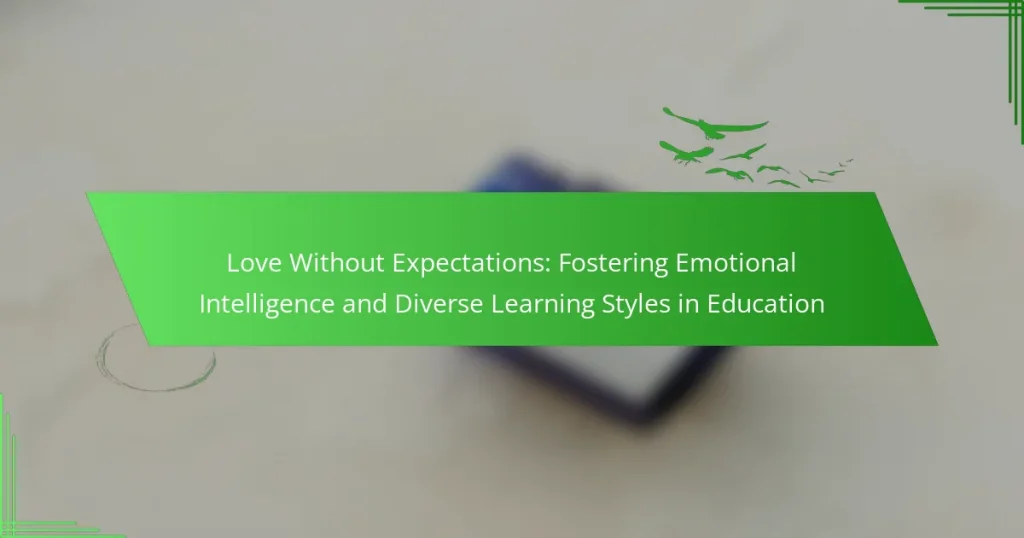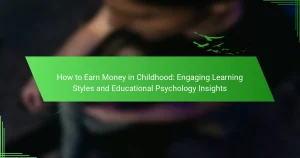Fostering emotional intelligence in education enhances student engagement and retention. This article explores how emotional intelligence promotes collaboration and empathy, supports diverse learning styles, and encourages inclusive teaching strategies. It highlights the importance of cultural sensitivity and adaptability in educators while providing practical methods for integrating social-emotional learning. Creating a safe classroom environment is essential for emotional growth and personalized learning experiences.
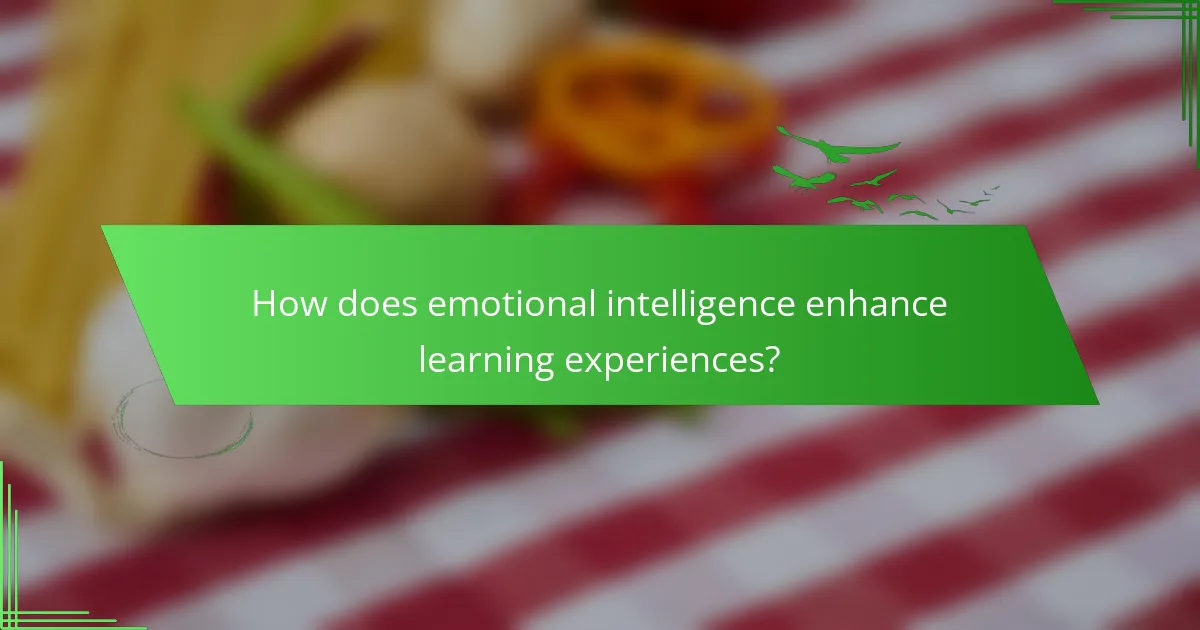
How does emotional intelligence enhance learning experiences?
Emotional intelligence enhances learning experiences by fostering empathy, collaboration, and self-awareness. These qualities create supportive environments where diverse learning styles thrive. Students with high emotional intelligence can better navigate social dynamics, leading to improved engagement and retention of information. Research shows that emotionally intelligent learners demonstrate greater adaptability and resilience, which are crucial for academic success.
What are the key components of emotional intelligence in education?
The key components of emotional intelligence in education include self-awareness, self-regulation, motivation, empathy, and social skills. These elements enhance student engagement and foster a supportive learning environment.
Self-awareness allows educators to recognize their emotions and biases, influencing their teaching approach. Self-regulation helps manage emotions, leading to better classroom management. Motivation drives both teachers and students to pursue learning goals. Empathy enables understanding of students’ emotional needs, while social skills facilitate effective communication and collaboration among peers.
Integrating these components nurtures a culture of emotional intelligence, promoting diverse learning styles and enhancing overall educational experiences.
How can educators cultivate emotional intelligence in their classrooms?
Educators can cultivate emotional intelligence in classrooms by integrating practices that promote self-awareness, empathy, and social skills. Strategies include incorporating collaborative activities, providing emotional vocabulary, and modeling emotional regulation.
Fostering a supportive environment encourages students to express feelings without judgment. Regular reflection exercises enhance self-awareness, while group discussions on emotions build empathy. These approaches help create a classroom culture that values emotional growth alongside academic achievement.
Utilizing diverse learning styles further enriches this process. Tailoring activities to different preferences ensures all students engage meaningfully. This inclusive approach not only enhances emotional intelligence but also supports overall learning outcomes.
Ultimately, prioritizing emotional intelligence in education leads to more resilient and socially aware students, better equipped for future challenges.
What strategies promote emotional awareness among students?
Incorporating reflective practices, promoting open communication, and integrating social-emotional learning activities enhance emotional awareness among students. These strategies create a supportive environment that encourages self-expression and understanding of emotions. For example, group discussions foster empathy and collaboration, while journaling allows for personal reflection. Engaging students in role-playing scenarios can also help them recognize and manage their emotions effectively.
How can teachers model empathy and understanding?
Teachers can model empathy and understanding by actively listening, demonstrating vulnerability, and fostering open communication. These practices create a safe environment where students feel valued. For instance, sharing personal experiences can help students relate and develop their emotional intelligence. Additionally, incorporating diverse learning styles allows teachers to address individual needs, enhancing overall classroom empathy.
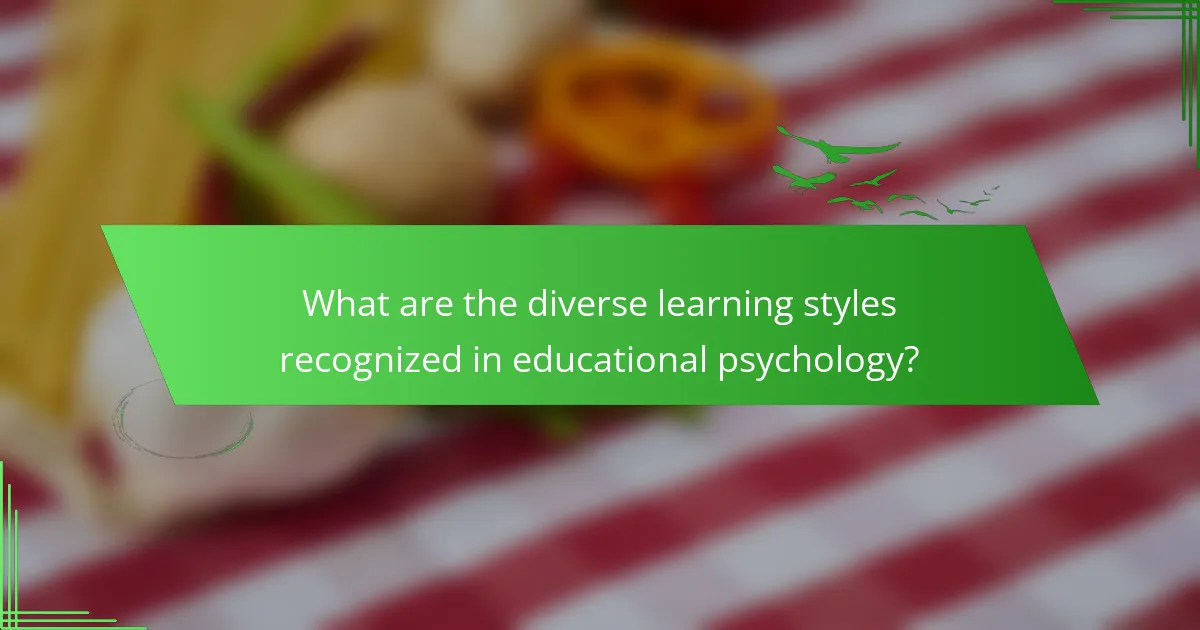
What are the diverse learning styles recognized in educational psychology?
Diverse learning styles recognized in educational psychology include visual, auditory, and kinesthetic modalities. Visual learners benefit from diagrams and charts, auditory learners excel with lectures and discussions, while kinesthetic learners thrive through hands-on activities. Understanding these styles fosters emotional intelligence by tailoring teaching methods to individual needs, enhancing engagement and retention.
How do visual, auditory, and kinesthetic learning styles differ?
Visual, auditory, and kinesthetic learning styles differ in how individuals absorb and process information. Visual learners prefer images and diagrams, auditory learners benefit from listening and discussions, while kinesthetic learners engage best through hands-on activities. Each style influences emotional intelligence development in educational settings, fostering diverse learning environments.
What role does cultural background play in learning styles?
Cultural background significantly influences learning styles by shaping how individuals process information and interact with educational environments. Different cultures prioritize various values, communication styles, and approaches to knowledge acquisition. For instance, collectivist cultures may emphasize group learning and collaboration, while individualistic cultures might focus on independent study and self-expression. Understanding these dynamics can enhance emotional intelligence in educators, fostering an inclusive atmosphere that respects diverse learning preferences and promotes effective teaching strategies.
How can educators identify and accommodate different learning styles?
Educators can identify and accommodate different learning styles by observing student behaviors and preferences. Utilizing assessments, surveys, and direct feedback helps tailor teaching methods to meet diverse needs.
Incorporating varied instructional strategies, such as visual aids, hands-on activities, and collaborative projects, fosters emotional intelligence and enhances engagement. Adapting lessons to include these elements supports unique attributes of learners, promoting a more inclusive educational environment.
Regularly evaluating the effectiveness of these approaches allows educators to refine their strategies, ensuring that all students benefit from personalized learning experiences.
What assessment tools can help in determining learning styles?
Assessment tools that help determine learning styles include questionnaires, observation checklists, and learning style inventories. These tools provide insights into individual preferences, enhancing emotional intelligence in educational settings. For example, the VARK questionnaire identifies visual, auditory, reading/writing, and kinesthetic learners. Such assessments foster diverse learning strategies, aligning teaching methods with student needs.
How can personalized learning plans be developed?
Personalized learning plans can be developed by assessing individual student needs and preferences. Begin by gathering data on each student’s learning style, strengths, and areas for improvement. Collaborate with educators to tailor instructional strategies that align with these insights. Incorporate flexible resources and assessments to adapt to diverse learning styles, ensuring that emotional intelligence is fostered throughout the process. Regularly review and adjust the plans based on student progress and feedback to maintain engagement and effectiveness.
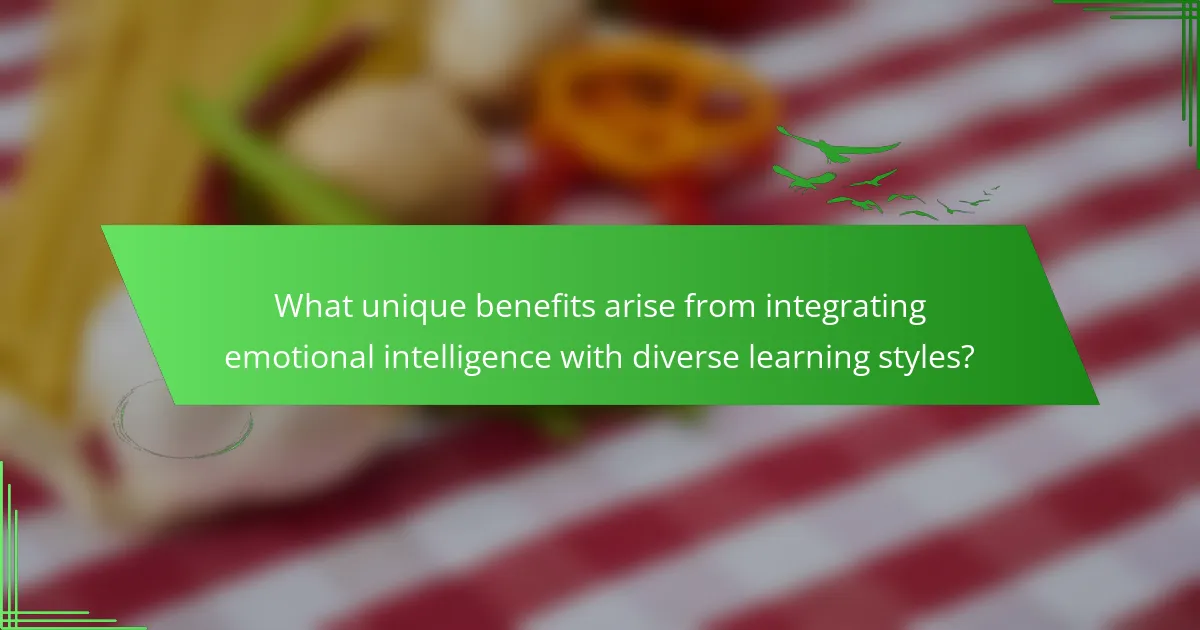
What unique benefits arise from integrating emotional intelligence with diverse learning styles?
Integrating emotional intelligence with diverse learning styles enhances empathy, promotes collaboration, and improves retention. Emotional intelligence fosters understanding among students, allowing them to appreciate different perspectives. This integration creates an inclusive environment where varied learning styles are recognized and supported. As a result, students experience personalized learning, leading to greater engagement and academic success.
How does fostering emotional intelligence support varied learning preferences?
Fostering emotional intelligence enhances varied learning preferences by promoting adaptability and understanding among students. Emotional intelligence encourages teachers to recognize and respond to diverse emotional needs, facilitating personalized learning experiences. It supports collaboration and communication, allowing students with different learning styles to engage effectively. Research indicates that emotionally intelligent environments lead to improved academic performance and student satisfaction. By cultivating empathy and self-awareness, educators can create inclusive classrooms that respect and leverage individual differences in learning preferences.
What are the impacts of emotional intelligence on student engagement and motivation?
Emotional intelligence significantly enhances student engagement and motivation. It fosters a supportive learning environment, encouraging students to express feelings and connect with peers. High emotional intelligence in educators leads to better understanding of diverse learning styles, promoting tailored teaching strategies. As a result, students feel valued, increasing their intrinsic motivation and participation in class activities.
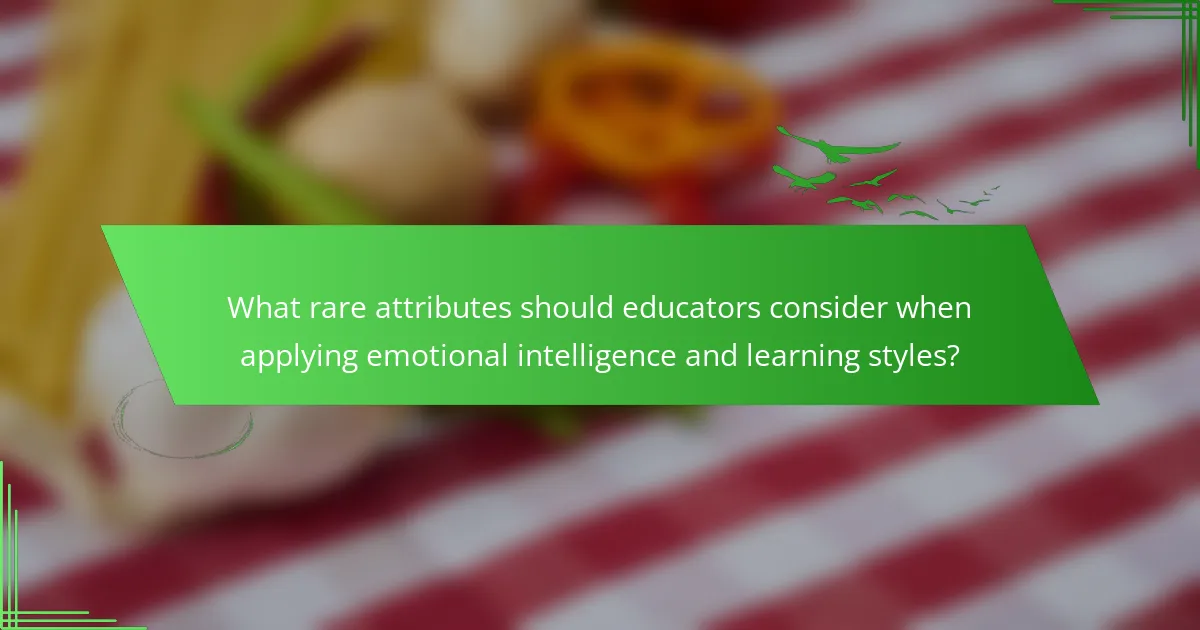
What rare attributes should educators consider when applying emotional intelligence and learning styles?
Educators should consider attributes like cultural sensitivity, adaptability, and emotional regulation when applying emotional intelligence and diverse learning styles. These rare attributes enhance understanding and connection with students. Cultural sensitivity fosters inclusive environments, while adaptability allows educators to tailor approaches. Emotional regulation helps manage classroom dynamics effectively.
How can emotional intelligence address the needs of neurodiverse learners?
Emotional intelligence can effectively address the needs of neurodiverse learners by fostering inclusive educational environments. It enhances understanding of diverse emotional responses, allowing educators to tailor approaches that resonate with individual learning styles. Emotional intelligence promotes empathy, enabling teachers to recognize and respond to the unique challenges faced by neurodiverse students. As a result, this approach cultivates a supportive atmosphere that encourages engagement, collaboration, and personal growth.
What innovative approaches can be used to blend emotional intelligence and learning styles?
Innovative approaches to blend emotional intelligence and learning styles include personalized learning environments and collaborative activities. Personalized learning tailors educational experiences to individual emotional and cognitive needs, enhancing engagement. Collaborative activities foster empathy and social skills, allowing students to learn from diverse perspectives. Integrating these methods can create a more inclusive and effective educational experience.
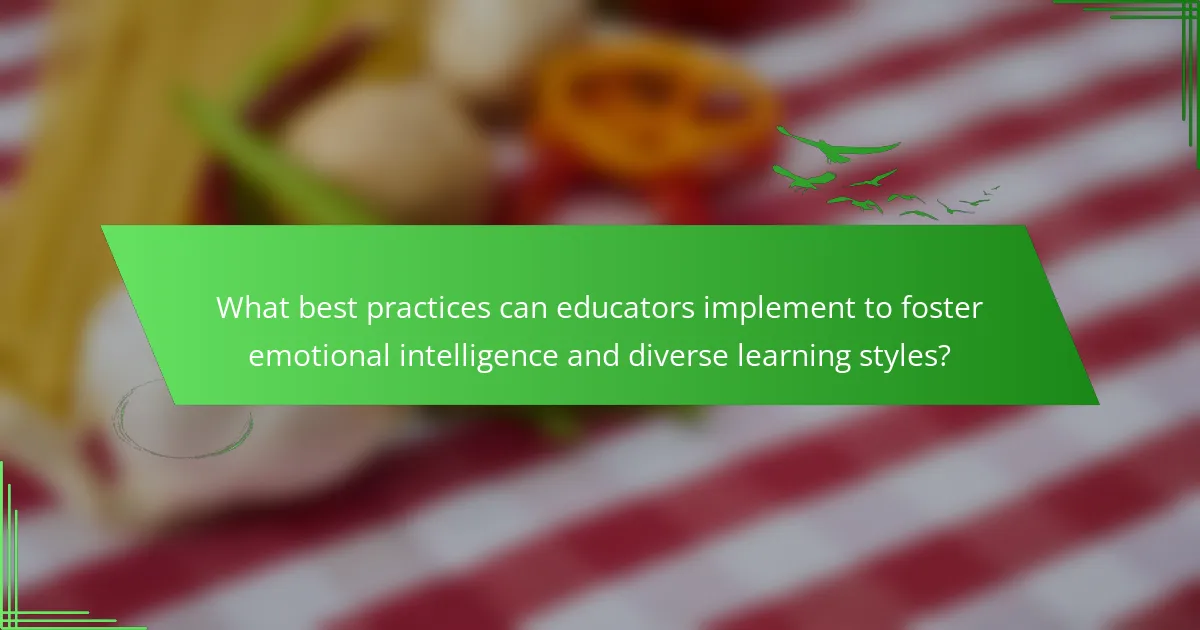
What best practices can educators implement to foster emotional intelligence and diverse learning styles?
To foster emotional intelligence and diverse learning styles, educators should implement inclusive teaching strategies. These strategies include active listening, promoting empathy, and incorporating varied instructional methods.
Active listening enhances students’ emotional awareness, allowing them to express feelings and understand peers. Promoting empathy through group activities helps students appreciate diverse perspectives. Utilizing varied instructional methods, such as visual aids and hands-on activities, accommodates different learning preferences.
Creating a safe classroom environment encourages open expression of emotions. Regular feedback supports emotional growth and reinforces positive behaviors. Educators can also integrate social-emotional learning (SEL) programs to systematically develop emotional intelligence in students.
Ultimately, these practices not only enhance emotional intelligence but also support diverse learning styles, fostering a more inclusive educational experience.
What common mistakes should be avoided in promoting emotional intelligence?
To promote emotional intelligence effectively, avoid these common mistakes. Failing to foster an inclusive environment undermines diverse learning styles. Neglecting to model emotional awareness limits students’ understanding. Overemphasizing theory without practical application reduces engagement. Ignoring feedback from students can hinder growth. Lastly, setting unrealistic expectations may lead to frustration.
How can continuous professional development enhance teaching strategies?
Continuous professional development enhances teaching strategies by equipping educators with innovative techniques and insights. This ongoing learning fosters emotional intelligence, enabling teachers to connect with diverse learning styles. As a result, students experience improved engagement and academic performance. Research indicates that teachers who participate in professional development report higher confidence in their instructional practices. Furthermore, tailored training programs can address unique classroom challenges, leading to more effective teaching outcomes.
What actionable tips can help educators successfully integrate these concepts?
To successfully integrate emotional intelligence and diverse learning styles, educators can adopt several actionable strategies. First, create a classroom environment that encourages open communication, allowing students to express their feelings and thoughts. Second, implement differentiated instruction by tailoring lessons to accommodate various learning styles, ensuring all students engage with the material. Third, incorporate social-emotional learning activities that promote empathy and collaboration among students. Lastly, provide regular feedback and support, fostering a growth mindset that values effort and resilience.
